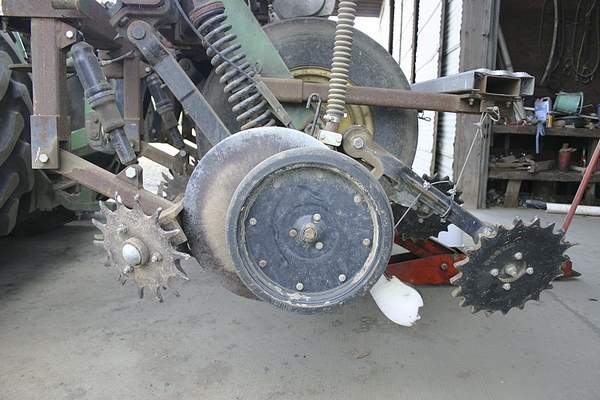Photo: No-till equipment at Garth Mulkey’s farm, originally designed to plant pumpkin seeds. The spiked wheels in the front push crop residue out of the way for the seed wheel to come behind it. The seed is then covered by the next spiked wheel.
With dry weather at hand, no-till crops can absorb and retain more water.
Garth Mulkey of Monmouth, Ore., has been using no-till practices since the 1990s. Garth Mulkey’s no-till wheat crop near Monmouth, Ore. With much of the West either “abnormally dry” or in drought conditions, no-till farming advocates say that method could be a way to better utilize the water that’s available.
No-till farming — also called direct-seed farming — is just what it sounds like, growing crops without tilling the soil. In contrast to traditional farming methods, no-till leaves all of the crop residue — the part of the plant not harvested — on the surface instead of plowed under.
The root systems of the plants remain intact, providing soil stability, according to Donald Wysocki, a soil scientist at Oregon State University Extension in Pendleton, Ore. The crop residue also creates a layer of organic matter that protects the soil from drying out, Stuart Wuest, a soil scientist at the USDA Agricultural Research Service in Pendleton, said. […]
Full article: No-till farming can help save water, proponents say
More about no-till farming:
Farm conservation leaders describe trials and solutions
Farmers’ efforts to help environment benefit Lancaster County farms
Cover Crops Look to be Changing Runoff Dynamics in Kansas
USDA: study finds no-till farming alone not sufficient to prevent water pollution from nitrate


